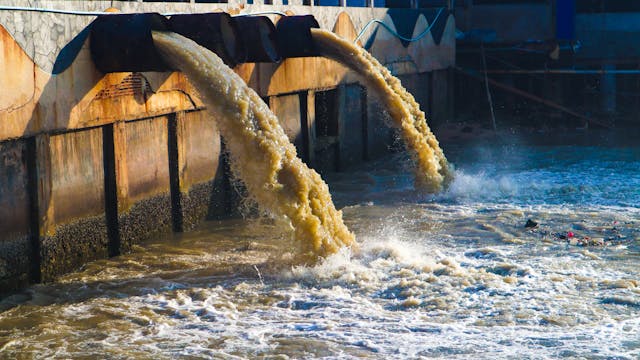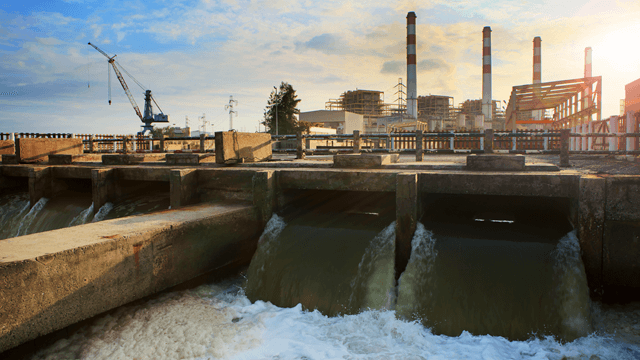Industrial Waste Water Treatment-- Cutting-Edge Technologies for Water Filtration
Industrial Waste Water Treatment-- Cutting-Edge Technologies for Water Filtration
Blog Article
Obstacles and Solutions in Industrial Waste Water Therapy
The therapy of commercial wastewater presents a diverse variety of obstacles, ranging from rigid governing compliance to the complexities of price administration and technological limitations. The irregularity in waste composition additionally makes complex the performance of traditional therapy methods, often causing escalated operational expenditures. Emerging options such as innovative oxidation processes and ingenious funding designs show pledge in addressing these problems. As industries come to grips with the demand for sustainable techniques, the inquiry remains: what methods will ultimately lead to an equilibrium in between compliance, cost-efficiency, and environmental responsibility?
Regulatory Compliance Challenges
Just how can industrial centers navigate the complex landscape of regulative conformity in wastewater therapy? The governing structure regulating wastewater management is multifaceted, usually varying by jurisdiction and kind of sector.
To efficiently take care of these compliance obstacles, centers need to execute robust monitoring and reporting systems that make certain real-time data collection and evaluation. Routine audits and risk evaluations can identify prospective compliance voids, allowing for positive modifications in therapy procedures. Staff member training programs concentrating on regulative understanding and finest methods are vital to foster a culture of conformity within the organization.
Furthermore, involving with governing agencies can provide important understandings and make clear uncertain policies. Facilities may likewise gain from seeking advice from ecological experts that specialize in wastewater therapy conformity, making sure that they stay informed of developing regulations. By taking on these approaches, commercial facilities can not just satisfy conformity demands but additionally improve their operational effectiveness and environmental stewardship.
Expense and Economic Obstacles
Browsing regulatory conformity in wastewater therapy frequently presents significant economic challenges for commercial facilities. The costs related to applying essential therapy innovations, preserving conformity with stringent regulations, and taking care of operational expenses can be discouraging. Several companies deal with high preliminary capital investment for the building or upgrading of wastewater therapy plants, which may stress budget plans, particularly for small and medium-sized enterprises.
Furthermore, recurring functional prices, consisting of labor, upkeep, and chemical inputs, add to the monetary problem. The unpredictability of varying power rates and the prospective requirement for additional investments to meet advancing guidelines intensify these economic stress. Oftentimes, the lack of economic rewards or assistance from federal government bodies makes it much more difficult for services to justify investments in sophisticated treatment systems.
Additionally, the financial feasibility of wastewater therapy options is commonly examined, particularly for markets with limited earnings margins. It is critical for industrial facilities to check out affordable techniques, such as adopting innovative funding options, involving in collaborations, and leveraging emerging innovations that can aid minimize these economic barriers while making sure conformity with ecological criteria.

Technological Limitations
Various technological limitations impede the efficiency of commercial wastewater treatment procedures. One significant challenge is the insufficiency of existing therapy innovations to address complicated pollutants. Numerous conventional approaches, such as turned on sludge and chemical rainfall, fight with the removal of emerging toxins, consisting of microplastics and drugs. This constraint frequently results in the discharge of improperly treated water, which can have harmful ecological effects.
Furthermore, the scalability of treatment technologies poses an obstacle. While some advanced techniques, like membrane filtering or sophisticated oxidation, reveal promise in controlled settings, their implementation on a bigger range can be much too costly and technically challenging. Upkeep and functional complexities additionally make complex i loved this the adoption of these systems, specifically for smaller sized industries with restricted technological competence.
The combination of real-time tracking innovations likewise continues to be not enough in several treatment facilities. Without efficient surveillance systems, drivers can not appropriately examine treatment effectiveness or detect prospective failures, causing inconsistent effluent high quality. Resolving these technical constraints via research study and advancement, alongside financial investment in ingenious options, is vital for enhancing the efficiency of industrial wastewater treatment and making sure governing compliance.
Irregularity in Waste Make-up
In the world of industrial wastewater treatment, the variability in waste composition provides an awesome challenge. Industries create wastewater with diverse features, affected by factors such as production procedures, basic materials, and operational techniques. This diversification complicates the therapy procedure, as traditional systems frequently have a hard time to effectively here are the findings attend to the wide array of pollutants existing.
For example, wastewater from food processing might include high levels of raw material, while effluents from chemical production might consist of hefty steels and dangerous materials. This variance demands versatile therapy techniques to guarantee compliance with environmental regulations and safeguard public wellness. Additionally, variations in waste structure can happen over time, influenced by adjustments in production routines, upkeep tasks, or the intro of new products.

Innovative Treatment Solutions
Ingenious therapy services are important for dealing with the intricacies of commercial wastewater monitoring. Typical methods frequently fall short in efficiently getting rid of a large range of contaminants, specifically in facilities with diverse effluent streams. Current improvements concentrate on integrating advanced technologies to boost therapy efficiency and sustainability.
One appealing method is the use of advanced oxidation procedures (AOPs), which take advantage of powerful oxidants to deteriorate organic contaminants. AOPs, consisting of photocatalysis and ozonation, can substantially lower toxic compounds and improve effluent quality. Furthermore, membrane layer bioreactor (MBR) technology has acquired grip, integrating organic therapy with membrane filtration, leading to top quality effluent and minimized footprint.
An additional cutting-edge remedy is the implementation of resource recovery systems. Strategies like anaerobic food digestion not only treat wastewater however also produce biogas, which can be used as a renewable energy resource. The adoption of artificial intelligence and equipment learning versions can optimize therapy procedures by predicting variants in wastewater structure, thereby boosting operational performance.
These cutting-edge solutions not only address governing conformity but likewise promote environmental sustainability, leading the way for a more reliable and resilient industrial ecological community.
Verdict
In verdict, attending to the difficulties of industrial wastewater treatment requires a multifaceted technique that incorporates regulatory conformity, cost administration, and technical advancements. A dedication to continual improvement in treatment techniques will ultimately add to the efficient administration of commercial wastewater and ecological defense.
The therapy of industrial wastewater provides a complex array of difficulties, varying from stringent regulatory compliance to the complexities of price monitoring and technical constraints. Industrial Waste Water Treatment.Browsing regulative conformity in wastewater treatment often offers substantial economic obstacles for industrial facilities. Attending to these technical limitations via study and development, together with investment in ingenious services, is crucial for improving the efficacy of industrial wastewater treatment and ensuring regulative compliance
Wastewater treatment centers should invest in durable tracking systems and flexible treatment innovations capable of suiting differing influent attributes.In conclusion, resolving the challenges of industrial wastewater therapy requires a complex technique that incorporates regulative conformity, price monitoring, and technological advancements.
Report this page